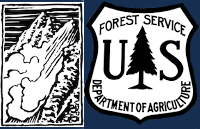20-21
Skier triggered wind slab at Bridger
Skier triggered slide on 10/26 at Bridger Bowl near the top of Pierre's Knob lift. Reported via IG story/message.
Skier triggered slide on 10/26 at Bridger Bowl near the top of Pierre's Knob lift. Photo: @taitbigmoneyswan
Forecast link: GNFAC Avalanche Forecast for Fri Oct 30, 2020
Skier triggered slide on 10/26 at Bridger Bowl near the top of Pierre's Knob lift. Photo: @taitbigmoneyswan
GNFAC Avalanche Forecast for Sun Oct 25, 2020
<p>We’re on the tail end of the first big storm cycle of the season. Triggering avalanches remains a very real possibility. With cold temperatures and continued blowing snow it will take several days for the hazard to significantly decrease. </p>
<p>During this storm we’ve seen avalanches and shooting cracks throughout the advisory area: in the Bridger Range (<a href="https://www.mtavalanche.com/images/20/wind-slab-avalanche"><strong><u>p…;, </strong><a href="https://www.mtavalanche.com/images/20/cracking-frazier-basin"><strong><…;), on Mt Blackmore in the northern Gallatin Range (<a href="https://www.mtavalanche.com/images/20/loose-avalanche-mt-blackmore"><st…;), near Cooke City, and on the Sphinx in the Madison Range (<a href="https://www.mtavalanche.com/images/20/shooting-cracks-sphinx"><strong><…;). Wind drifted snow is the common theme between all these signs of instability. Slopes with drifted snow have the most continuous snow cover and are also where you are most likely to trigger avalanches. With shifting winds today and tomorrow, watch out for new slopes being loaded. Shooting cracks or recent avalanches are bullseye data that the snowpack is unstable. Watch Doug’s <a href="https://youtu.be/tpbI_mgWKJ4"><strong><u>video</u></strong><u> </u></a>from the Sphinx for a good reminder to stay heads up, even though it’s early season. </p>
<p>Snow depths range from less than a foot at lower elevations to 2-3 feet at higher elevations in the northern ranges and around Cooke City. This is plenty of snow to cause a season ending avalanche. Despite it being October, because there is snow on the ground, normal mid-winter travel advice applies: bring a partner, travel one at a time in avalanche terrain, and make sure you’re carrying rescue gear (beacon, shove and probe) and know how to use it. Hunters, ice climbers, and skiers have all been caught in early season avalanches (<a href="https://www.mtavalanche.com/accidents"><u>accident reports</u></a>). Be cautious and stay safe, we have a long winter ahead.</p>
<p>We’ll be updating the <a href="https://www.mtavalanche.com/weather/wx-avalanche-log"><strong><u>weather log</u></strong></a>, <a href="https://www.mtavalanche.com/photos"><strong><u>photos page</u></strong></a> and <a href="https://www.mtavalanche.com/avalanche-activity"><strong><u>avalanche activity list</u></strong></a> daily and issuing early season updates throughout the fall as conditions merit. If you have avalanche, snowpack or weather observations to share, please submit them via our <a href="https://www.mtavalanche.com/node/add/snow_observation"><strong><u>websi…;, email (<a href="mailto:mtavalanche@gmail.com"><strong><u>mtavalanche@gmail.com</u></str…;), phone (406-587-6984), or Instagram (#gnfacobs).</p>
Upcoming Avalanche Education and Events
See our education calendar for an up to date list of all local classes. Here are a few select upcoming events and opportunities to check out:
Cracking wind drifts in Cooke City
Cracking wind drifts reported in Sheep Creek Basin on 10/24.
Loose snow avalanches on Blackmore
Today I skinned in and skied around the E side of the N ridges coming down off of Blackmore. The snow is about 2’ deep off of the ridge down to the bottom of the bowl on the east faces, with variations where the wind has loaded/stripped the snow. The wind was gusting out of the N/NW/W. I observed some natural loose dry sluffs on the N face and the E face off the N ridge. They look like they came down in the last 24 hours with this new snow and wind; they were still fairly defined when I saw them.
